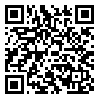Volume 7, Issue 4 (12-2018)
2018, 7(4): 43-57 |
Back to browse issues page
Download citation:
BibTeX | RIS | EndNote | Medlars | ProCite | Reference Manager | RefWorks
Send citation to:



BibTeX | RIS | EndNote | Medlars | ProCite | Reference Manager | RefWorks
Send citation to:
Ghanbari S, Nasri M, Keivan behju F, Sefidi K. Comparison of Species Diversity of Natural and Man-made Gaps at Different Physiographic Conditions in Siahkal Forests of Gilan Province. Iranian Journal of Applied Ecology 2018; 7 (4) :43-57
URL: http://ijae.iut.ac.ir/article-1-889-en.html
URL: http://ijae.iut.ac.ir/article-1-889-en.html
university of Tabriz
Abstract: (9070 Views)
Send email to the article author
| Rights and permissions | |
 | This work is licensed under a Creative Commons Attribution-NonCommercial 4.0 International License. |







